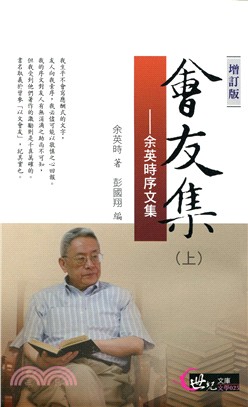Studies on Humanistic Buddhism VI Humanistic Buddhism: Wisdom and Compassion in Action
商品資訊
系列名:Studies on Humanistic Buddhism
ISBN13:9789574578092
出版社:佛光文化
出版日:2024/10/01
裝訂/頁數:平裝/280頁
規格:23cm*17cm*1cm (高/寬/厚)
版次:1
商品簡介
序
"Editor’s Preface
In Buddhism, the concept of upāya kauśalya refers to using skillful means to teach each person according to their capability to understand. What might be appropriate for some people at a certain time might not be appropriate for others at different times. In other words, tailoring the message so that it resonates with the audience. Although the means of guiding sentient beings are only partial aspects of the ultimate truth, using language and teaching methods that inspire others to begin on the path toward enlightenment. Skillful means is one of the perfections (paramitā) of Mahāyāna Buddhism. Just like a bodhisattva motivated by wisdom and compassion, Venerable Master Hsing Yun made a great vow to help bring out the spiritual potential of sentient beings. He crafted a version of Humanistic Buddhism that integrated Buddhist doctrine with the daily life of people of current times and cultures. He not only adapted his teaching to effectively transmit the Dharma, he also used skillful means to propagate the Dharma. The articles in this volume discuss some of the various ways he grew the Fo Guang Shan into a worldwide Buddhist organization through building temples throughout the world, founding the Buddha’s Light International Association (BLIA) for lay practitioners, globalizing and localizing, education, natural aesthetics, and through developing the concepts of collective effort and leadership by system.
Venerable Master Hsing Yun was born in the province of Jiangsu, China in 1927 and passed away at his residence in Fo Guang Shan monastery in Kaohsiung, Taiwan on the fifth of February 2023. This volume looks at some aspects of his life and works that might appear to be disparate at first glance. However, when considered from the point of view of his great vow to spread the Dharma and benefit all sentient beings, everything he did can be considered a skillful means.
An entry from Venerable Master Hsing Yun’s diary is included to allow the reader to travel in both time and space, spending a fortnight with him in Southern California during late May of 1992. The title, “The Dharma Gate of Non-Duality: Joy and Harmony” comes from the theme of the first general conference of the BLIA, which was the reason for Venerable Master Hsing
Yun’s visit. Among the dates, people, and places, there are hidden gems of wisdom. Moreover, we get an intimate glimpse of the man whose vision Fo Guang Shan was built around. In this diary entry, he explains the importance of study:
Study is necessary for acquiring knowledge. It is the key to improving understanding and exploring spirit and mind. It is the spark that ignites the fire of knowledge, and the fountainhead of prajña wisdom. The main purpose of study is integration, supplemented by the skillful application of methods and techniques. When you study, master your subject through diligence and experience. Study is not limited to what is printed in books. Study people, study life, study society. All of these are masterpieces in their own right.
Some of the entries directly relate to ideas that are discussed in this journal, such as building temples (in this case Hsi Lai Temple), as discussed in depth by Sioh-Yang Tan and Venerable Juewei in this volume, as well as the “gradual realization of the ideal of localizing Buddhism,” which was the theme of volume three.
Sioh-Yang Tan and Venerable Juewei discuss how Venerable Master Hsing Yun achieved his goal of spreading the Dharma by building temples. They begin the discussion with the building of Hsi Lai Temple in California. By 2023, Fo Guang Shan had one hundred seventy-nine temples around the world. Venerable Master Hsing Yun built temples as a shared space for both the lay and monastic community. Temples allow various religious, social, and educational activities to be integrated spatially. The authors note that this also allows people to have roles that can vary over time—devotee, BLIA member, student, teacher, volunteer, and others. The building of temples and the development of lay communities went hand-in-hand. They note that there are still divisions along language and ethnic lines.
Chen Chien-Huang’s “Managing the Mind: at the Heart of Venerable Master Hsing Yun’s Applied Management” also has references to temple construction. Chen examines the management philosophy of Venerable Master Hsing Yun. This philosophy was based on the principles of collective effort, leadership by system rather than individuals, and the combination of compassion and wisdom. The English translation of the Chinese title captures the spirit of Chen’s observation that management of the mind was at the heart of Venerable Master Hsing Yun’s approach to management with a play on words—the Chinese word 心 can be translated as both ‘mind’ and ‘heart’. His unique approach to leadership guided the development of Fo Guang Shan into the large global institution it is today. As with Humanistic Buddhism as a whole, Venerable Master Hsing Yun managed to infuse a sense of sanctity into the secular concept of management.
Huang Wen-Shu’s article “Preliminary Study on Venerable Master Hsing Yun’s Educational Leadership Style” also looks at management, in this case management of educational institutions. As with temples, Venerable Master Hsing Yun led the establishment of many schools, from kindergarten to universities. One of his goals when founding Fo Guang Shan was to foster talent through education. The same qualities that helped him develop an international monastery system. His compassion, ability to fundraise, and skill in delegation are common threads that led to success in any venture Venerable Master Hsing Yun took up.
The articles in this volume show the broad scope of Venerable Master Hsing Yun’s vision. He guided the development of Fo Guang Shan through education, management, spiritual cultivation, and also through arts and literature. Gao Wenqiang’s article “Venerable Hsing Yun’s Aesthetics of Nature” examines the linkages between nature, art, and religion. Gao finds that Buddhist cosmology expanded his imagination and understanding dependent origination deepened his thinking. Gao believes it was Venerable Master Hsing Yun’s natural aesthetic that helped him teach the profound lessons of Buddhism in a simple and joyful way.
Several papers are included from postgraduate students. David Starlyte interrogates the issue of race from a Buddhist perspective. He concludes that race is a sociopolitical issue, but is not really a concern of Buddhism. The core of Buddhism is purification of the mind. As the mind is purified, one begins to act with compassion for all beings. This eliminates racism by the root. Reverend Doshin Koku writes about Zen Master Seung Sahn. As Venerable Master Hsing Yun did with Taiwanese Buddhism, Master Seung Sahn was one of the figures responsible for teaching Korean Zen Buddhism to the United States. Like Starlyte, Reverend Doshin Koku finds that Master Seung Sahn’s simple teaching of non-duality—‘don’t know mind’—helped to integrate women into leadership roles in Buddhism by showing the empty nature of some traditional gender roles. Li Guo considers the changes Venerable Master
Hsing Yun made to Guanyin devotion. She concludes that the same impetus that led to the development of Humanistic Buddhism also changed the nature of devotion to Guanyin. Most important is the change in emphasis from prayer for divine blessings toward individual cultivation. In other words, a change from worshiping Guanyin to becoming like Guanyin. Julius Hofer discusses how Venerable Master Hsing Yun propagated the Dharma through art. In this case, his one-stroke calligraphy. The phrase in the title of the paper “beyond the stroke” refers to the fact that one-stroke calligraphy is another area where Venerable Master Hsing Yun showed a great capacity to adapt to the conditions he was under. After a stroke, he had to relearn how to write. His physical limitations meant that he could not pick up the brush once a piece of calligraphy was begun. Therefore, he developed a system where a helper would move the paper under his brush so the entire piece could be completed with one long brushstroke. Lih Jing Ting examines how Venerable Master Hsing Yun reinterpreted the idea of a Pure Land within the context of Humanistic Buddhism. His interpretation focuses on constructing an earthly Pure Land rather than an other-worldly one. This follows the general theme
of Humanistic Buddhism of emphasizing practice in this world to transcend it instead of attempting to escape it.
This volume only highlights some of the ways Venerable Master Hsing Yun used skillful means to fulfill his vow. The themes written about by the authors in this volume show how the various aspects of his life all served to shine the Buddha’s light for all. Not only did he epitomize the name of the organization he founded (Fo Guang Shan [佛光山] in English is literally ‘Buddha’s Light Mountain’), he was a living embodiment of the Buddhist teachings. Building temples around the world, promoting education, art, reinterpreting Buddhist ideas employing current language, using Buddhist principles to manage the large international Buddhist organization that Fo Guang Shan has become, these and other activities were all part of the same work. He humbly described that work himself in the introduction to his biography, stating that he considered “preaching the Dharma a daily duty and benefiting all living beings a lifetime career.”
"
目次
Venerable Master Hsing Yun’s Diary #17 (May 16-31, 1992): “The Dharma Gate of Non-Duality: Joy and Harmony,” 歡喜與融和 Venerable Master Hsing Yun 星雲大師 1
Managing the Mind: at the Heart of Venerable Master Hsing Yun’s Applied Management
星雲大師的「應用管理」心法 Chen Chien-Huang 陳劍鍠 63
Preliminary Study on Venerable Master Hsing Yun’s Educational Leadership Style
星雲的教育領導風格初探 Huang Wen-Shu 黃文樹 125
Venerable Master Hsing Yun’s Aesthetics of Nature 論星雲大師的自然審美觀
Gao Wenqiang 高文強 155
Reflections on Venerable Master Hsing Yun’s Temple-Building Endeavor between 1988 and 2000 Sioh-Yang Tan and Ven. Juewei 175
Buddhist Responses to Contemporary Issues of Race, Racial Prejudice, and Social Justice David Starlyte 201
Zen Master Seung Sahn’s Teaching of “Don’t Know Mind” and its Contribution to Gender Equality in Western Buddhist Communities Rev. Doshin Koku 217
Interpreting Venerable Master Hsing Yun’s Commentaries on the Guanyin Faith
Li Guo 225
Beyond The Stroke: The Dharma of One-Stroke Calligraphy Julius Hofer 243
Venerable Master Hsing Yun and the Reinterpretation of the “Pure Land” within Humanistic Buddhism Lih Jing Ting 251"
主題書展
更多書展今日66折
您曾經瀏覽過的商品
購物須知
為了保護您的權益,「三民網路書店」提供會員七日商品鑑賞期(收到商品為起始日)。
若要辦理退貨,請在商品鑑賞期內寄回,且商品必須是全新狀態與完整包裝(商品、附件、發票、隨貨贈品等)否則恕不接受退貨。





















































































